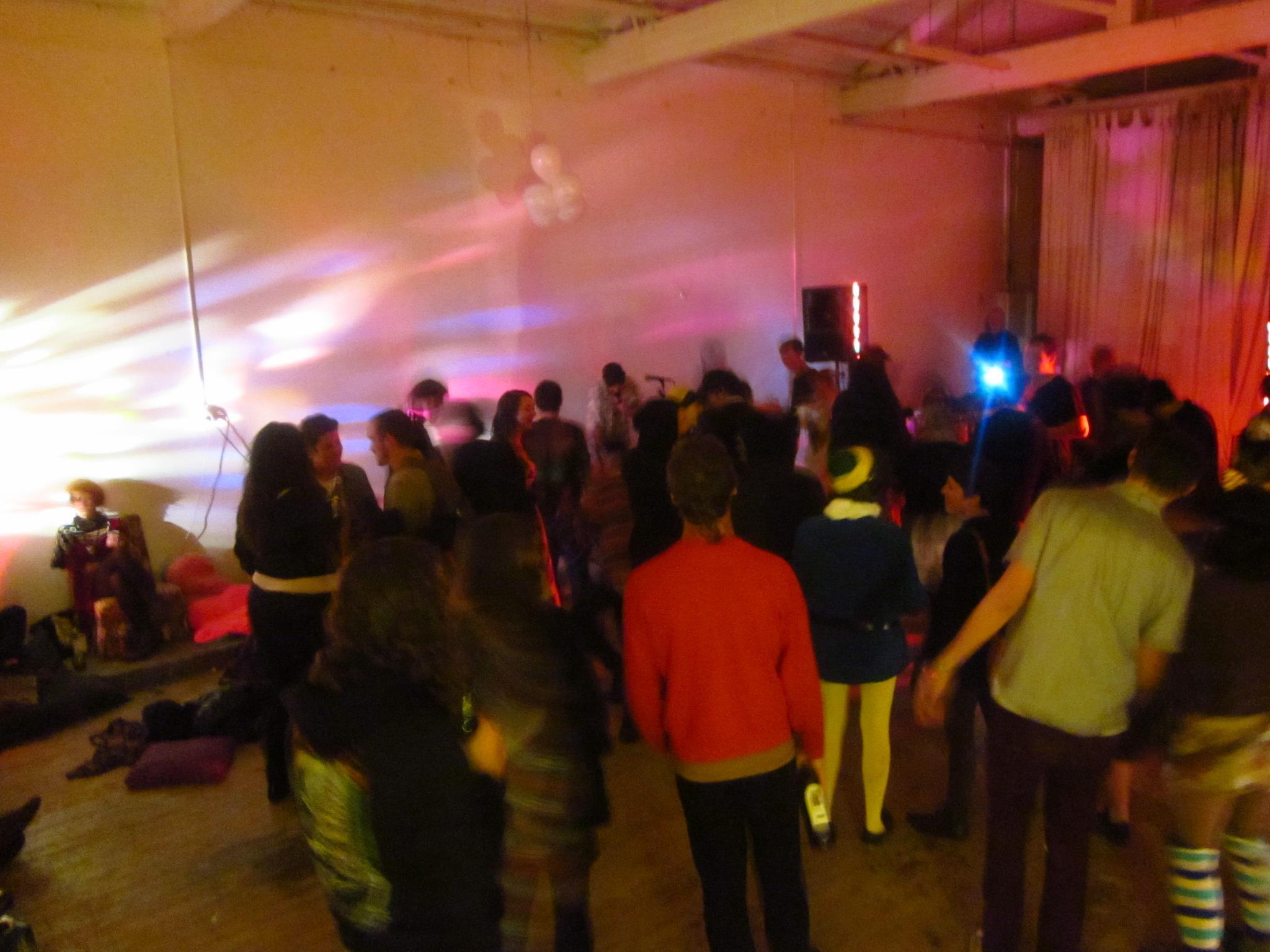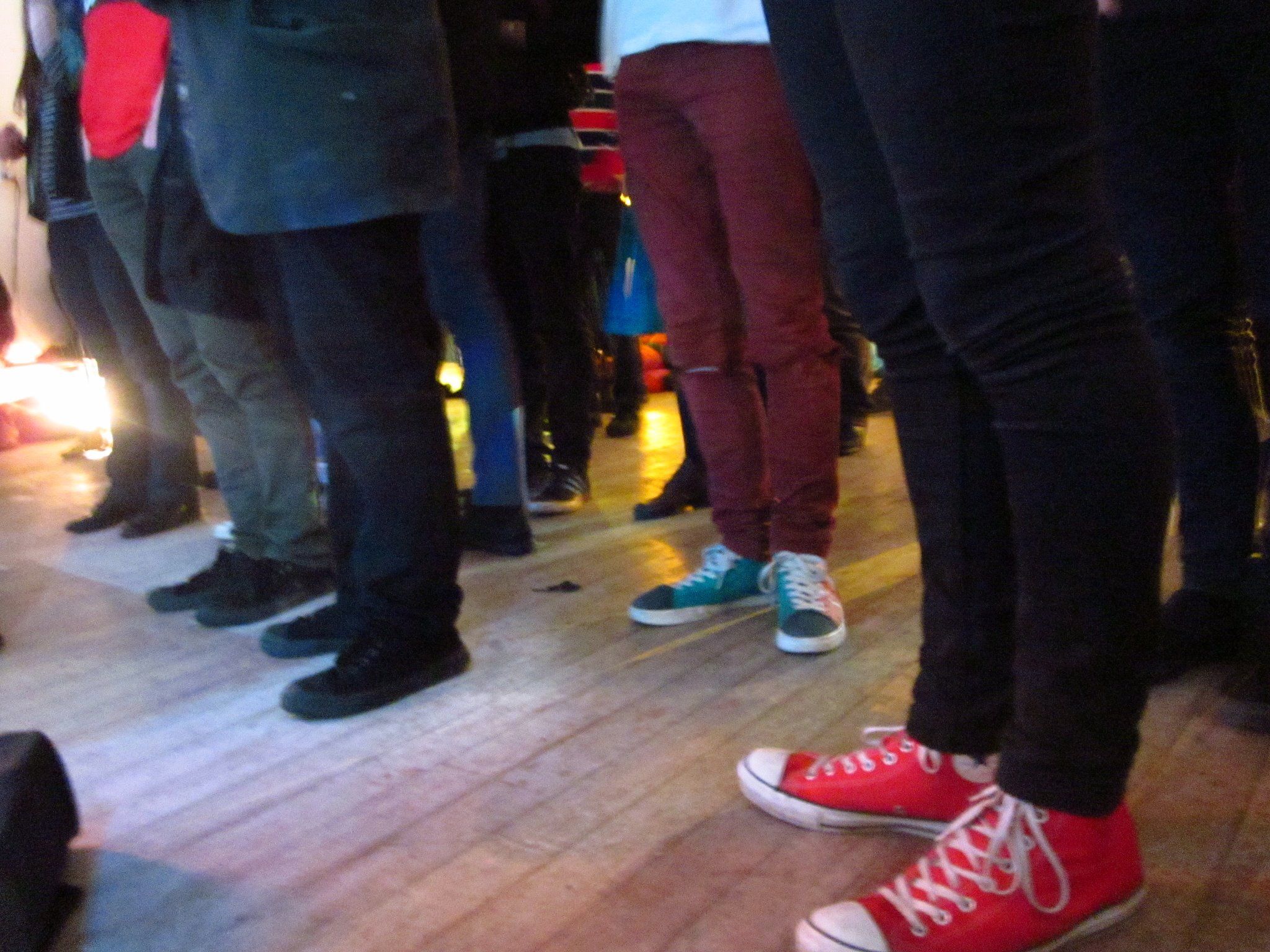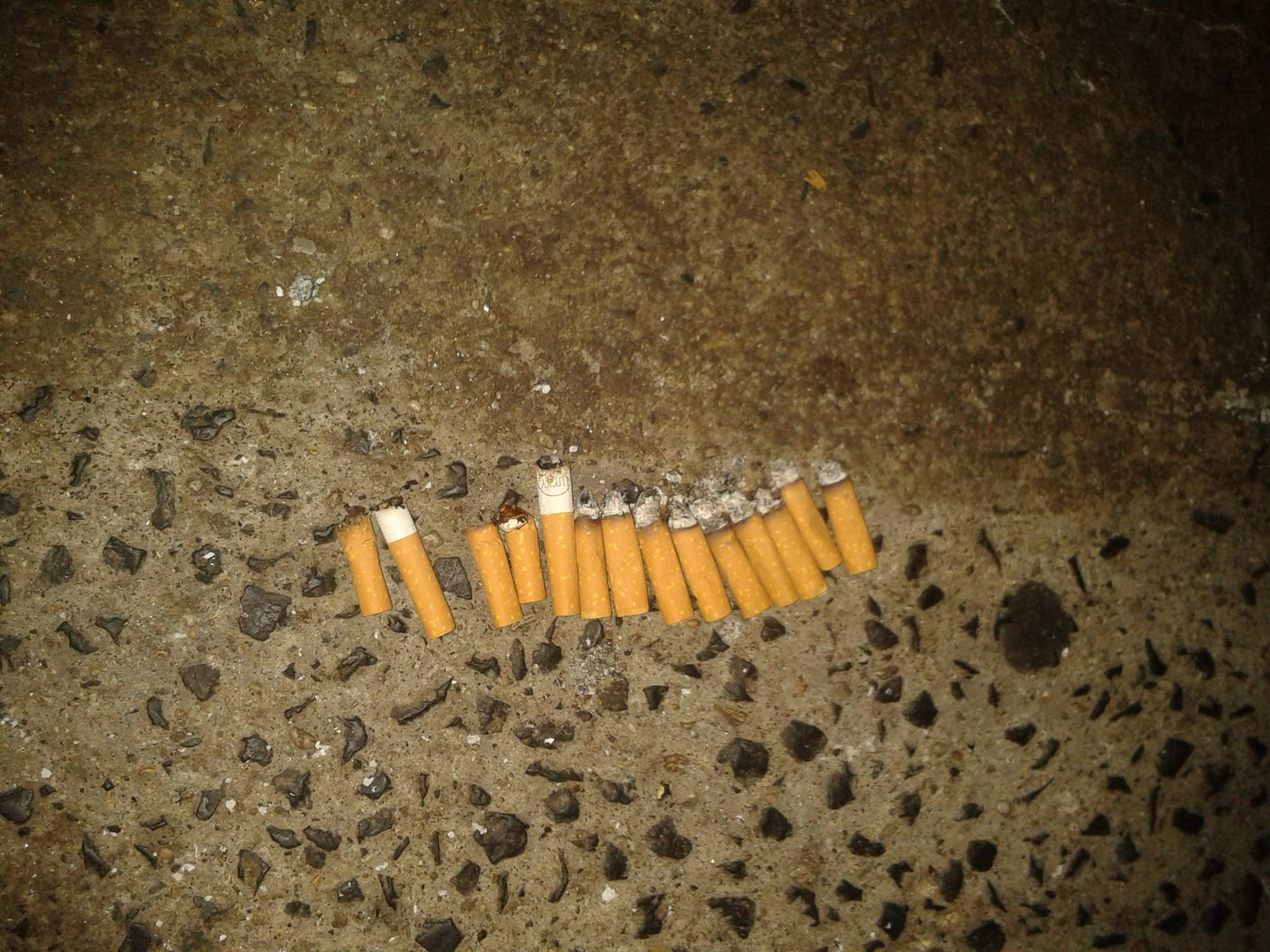Filling an Empty Room
Ōtepoti writer and poet Eliana Gray reflects on the city’s DIY music and arts scene – how it came together, how it fell apart, and the places and people left behind in its wake.
From 2011–14, Ōtepoti’s independent art and music scenes clustered around a few DIY venues. None Gallery, Glue Gallery, The Shed and The Attic played host to gigs, art exhibitions, revelry and community. For a brief period, it felt like everyone was partying and existing together, always in the same spaces, always on top of one another. Then, around 2014, all except The Attic shut their doors, or stopped putting on gigs. The community went through a period of disintegration and transformation.
Many of these gigs, parties and events now exist solely in the minds of those who attended them. Much of the documentation that does exist is filtered through think pieces like this one. Glazed with personal nostalgia, with rounded corners that miss the sharpest points. I’m here to add to the pile, shamelessly, and with love. But in 20 years, when our memories are even more threadbare than they are today, I want it on record that this story will miss all the best and worst bits of what it was like to party and partake in community in these spaces.
Photo by Jelly O'Shea.
Robbie Motion was still in high school when he opened the disused plant nursery in his parent’s bottom paddock as The Shed, an all-ages gig space he and his friends intended to use to leverage their way into an older and seemingly exclusive music scene. The power company had conveniently forgotten to disconnect the supply to the outbuilding, resulting in fertile ground for a group of high-school students with some newly formed bands and no fake IDs. Their plan worked brilliantly. Pre-Shed, I knew Robbie as one of the young people I would need to kick out once the café I worked at switched into its night-time bar mode. Post-Shed he was Robbie Motion, musician. The first gig’s line-up was a coup (Idiot Prayer and Sewage), attended by the bands and approximately ten of their friends. Everyone crammed into a concrete box on the edge of one of the city’s numerous hill-suburbs.
Given the arts-and-venue-hungry landscape of the city, it wasn’t long before the crowd sizes and frequency of gigs increased. Looking back, I have complex, unresolved and negative feelings about a multi-generational scene burgeoning with drugs descending on a shed full of teens. In 2012, as a 21-year-old with scant consciousness of my own trauma – a year away from a breakdown that would finally send me to therapy – and a deep need for community validation, I was looking for a place to put on a gig.
Looking back, I have complex, unresolved and negative feelings about a multi-generational scene burgeoning with drugs descending on a shed full of teens.
The first Block Party had taken place six months earlier at Glue Gallery. There had been seven bands, hopscotch, a zine-making station, a clothes swap and the aim of wholesome, day-time, family-friendly vibes.
Block Party the second had a considerably more ambitious scope. Two stages, 17 bands, free food, free clothes, promises of a paddling pool I have no memory of promising or providing, and a fundraising bucket for Rape Crisis Dunedin. The idea had been to provide a semi-wholesome atmosphere. The reality was a 21-year-old with a still-developing frontal lobe and a seventh former putting on a gig using mostly vibes, and an evening portion that I was definitely too drunk for.
Throughout the early 2010s, the intertwined nature of the scene made events easy to activate. There was always someone happy to lend a PA, you could paste your posters up with flour and water, and often find friends to help you stick them up under the clandestine cover of night. Ōtepoti was lush with cheap rent, a steady rotation of people moving through tertiary institutions, and a façade of edginess imparted by the Dunedin Sound and people wearing black. It continually attracted outsiders of varying degrees of lovable with a penchant for not having a lot of money but wanting to make stuff. Here, you could afford to rent the $50 studio on top of your $90 room. Everyone was getting drunk at the same two bars, going to art school, and starting bands in their studios. We wanted spaces where we could bring our own booze and spill over the sidewalk smoking cigarettes without bumping into tables of students sinking jugs.
Photo by Eliana Gray.
Stafford Street is an unassuming line running straight up the hill from the edge of the central city; trimmed with sagging villas, warehouses of varying disrepair and a church I’d never seen anyone go in or out of. At the almost-bottom was None Gallery, an artist-run space with studios and accommodation that was a focal point for the edgier and more artsy members of the scene. Jelly O’Shea was freshly back from Melbourne (where a bubblegum-esque aesthetic was taking hold) and living at None, when the building next door – owned by the same landlord – came up for rent; Glue Gallery became its own fixture of the scene and played host to a staggering number of art shows, gigs, D&D meet-ups and community events. What started as a collective venture turned into Jelly paying the majority of the rent, pulling 60-hour weeks and moving into the gallery, as they were no longer able to afford her room next door at None. While there were many people who ‘shared the vision’, the ‘realities of life’ often got in the way of follow-through. Jelly had an ethos of the space belonging to everyone, with no leader, but found the lack of structure was paralysing people’s ability to engage with the collective and do the work.
A year before the first Block Party, at the start of Glue’s lifecycle, we were smoking cigarettes in the alleyway when the motel owner turned up with a baseball bat. Tensions had been simmering between the motel and the residents of None Gallery for years. That Glue Gallery had recently opened, and partaken in throwing musical parties too, was only adding fuel to the stop-keeping-my-paying-guests-up fire. One imagines that if – say – a ratbag musician had turned up on the motel doorstep with a baseball bat, things would have played out quite differently. It didn’t matter that it was almost the end of the gig. It didn’t matter that the residents of None and Glue had given prior warning that GooFest would be going until 10pm that night. Promptly intimidated (who wouldn’t be?), the noise was stopped. The problem was, we were one day into a three-day event. Was someone going to get knee-capped over a good time and an $80-per-night room? The answer, as it usually does, lay in not listening to the old man. Glue’s long hall next door to the gallery had walls more solid than None’s crumbling dust, and the noise was, thankfully, held to a degree that no more weapon-wielding landowners turned up. But this incident added to the pile of pressures bearing down. No one was sober or prepared enough for confrontations like this. It wouldn’t be long before None (who had already been forced to retreat most of their gigs to the basement) gave up hosting gigs for the next few years. Add to this the rising costs of living and the tumultuous nature of community-run spaces, and, soon, Glue closed its doors, not just for gigs, but for good.
As Robbie and I are talking, he describes Block Party 2 as the zenith of The Shed experience. He and his friends had a good time, which I am thankful for. His goal of inserting himself into the adult music scene had succeeded. There were regular gigs at The Shed, and Robbie was playing non-Shed gigs and designing album covers and posters for local bands. Block Party 2 also represents the beginning of the end for The Shed. The noticeably larger audience, full of unknown adults, led to a larger degree of responsibility, including kicking someone out for the first time and, a few weeks later, a break-in that saw the amps and instruments untouched but the GameCube stolen. Robbie muses about this chain of events (coupled with the soon-to-be ability to play gigs in bars) as the reason for The Shed’s demise. But, as we continue, we both start to wonder if the answer was less linear.
The man we kicked out of Block Party 2 was a known shithead and the adult boyfriend of one of the aforementioned teenagers. During this era of the community, adult boyfriends of teenagers were side-eyed and whispered about by a few of us, but mostly allowed to roam free and unharmed. I was working at both Rape Crisis Dunedin and a city bar central to the scene, so these years of my life were marked by an increasing knowledge of trauma and a steadily growing list of the predators in our community.
2012 seemed to be the year the veil started to lift, and some of us were no longer able to ignore the growing list of bad behaviours committed mostly by lionised older men.
It’s a surprising discovery in my conversations with Jelly and Robbie that, despite the age gaps between us, we all felt a similar trajectory in our cognisance of the dangers surrounding us. 2012 seemed to be the year the veil started to lift, and some of us were no longer able to ignore the growing list of bad behaviours committed mostly by lionised older men. It’s funny in the not-funny way that, ultimately, what felled these spaces wasn’t solely the pressures of capitalism, but the pressures of other people’s behaviour. Both Jelly and I felt the pressure of being among a minority of people who were willing to yell at the wasted gropers and adult boyfriends. Banning predators from spaces or speaking openly about them was mostly met with derision. Choruses of “He’s a good guy” and “I’ve never had a problem with him” were frequent. Towards the end of The Shed, Robbie started to feel disillusioned with the responsibility of running a venue. Why be in charge of a space whose safety you can’t guarantee when you could just… not?
From 2011–14 I worked at Mou Very, a literal arms’ breadth of space on the main street of Ōtepoti; café during the day and a bar in flagrant violation of multiple council codes at night. It was one of two spaces the bulk of the scene congregated where you had to pay for stuff; the transitional nature of the space allowed for plenty of intergenerational mingling, gig planning and shit-talking. That we were always in places like this, without age restrictions, played a part in the multigenerational nature of the scene; we were crammed into the alleyway at Mou Very, tucked under the exposed beams of The Attic, in the concrete box of The Shed, the back garden of Glue, or None’s disintegrating basement. Being forced to be in proximity to the same people over and over is an ingredient in community building. But for all the intimacy and beauty we found, there were also teens partying with adults, in spaces rife with substance use and predatory behaviour.
I didn’t expect to write about this. I thought I’d write a piece about the pressures of capitalism and reminisce about some fun parties, but hindsight is transformative. I’m walking on the beach with a friend two years older than Robbie, when I mention that these conversations have made me wonder if I was one of the unsafe adults around these young people. Even as I remember being focused on protecting the younger people around me, I was mired in my own 21-year-old trenches. I know I would behave differently now. As I’m spiralling about everything secretly being worse than I remember, the friend reflects that their memories are mostly positive. Robbie speaks similarly, highlighting how running The Shed gave him a sense of agency in a clique-filled social hierarchy, and opportunities to expand his self-expression. It seems like a wholesome ideal to have people from many age groups participating in community and engaging with art together. While some of that certainly happened, and was formative and nurturing for pockets of our community, I know that we were far from the safest version of a multigenerational scene.
It’s important to mention here that history is always a kaleidoscope of personal truths. Revisiting these memories can feel like listening to a David Bowie song. It’s familiar, there’s some bangers, but you know scungy shit went down behind the scenes. For some, these times represent a genesis of trauma. We’ve lost people, due, in part, to what went down during these years. It’s sad, uncomfortable and accurate for these truths to sit alongside one another. It is important that we reflect on the lack of safety, and prioritise the wellbeing of our people over getting wasted and having a good time. Is every single person in the scene culpable for the bad behaviours? No. But the communities I want to be a part of take responsibility for each other. For some, this time period is characterised by trauma and broken trust. Any exploration would be disrespectful and untrue if it didn’t acknowledge that hurt. As always, groups of people fall victim to the societal structures that scaffold them.
Individuals are responsible for their actions, but the shuttering of these venues does not lie at a single person’s feet.
Individuals are responsible for their actions, but the shuttering of these venues does not lie at a single person’s feet. An under-resourced mental health sector, rising rents, noise control, drug prohibition, rampant and socially encouraged alcohol use, and a lack of education around consent all contributed to the unwieldy beast that is managing a community space, and, ultimately, to the decisions that led to the closing of Ōtepoti’s DIY venues circa 2012. These pressures are still running unchecked today, and look set to worsen under the new government’s next three years. It is deeply unsurprising that, if we want community spaces to thrive, we need the resources and support to look after each other first.
This essay is part of our Dunedin Critical Coverage Project, a project formed in partnership with Ōtepoti Writers Lab and funded by the Dunedin City Council.
Header image of GooFest by Jelly O'Shea, supplied by author.




